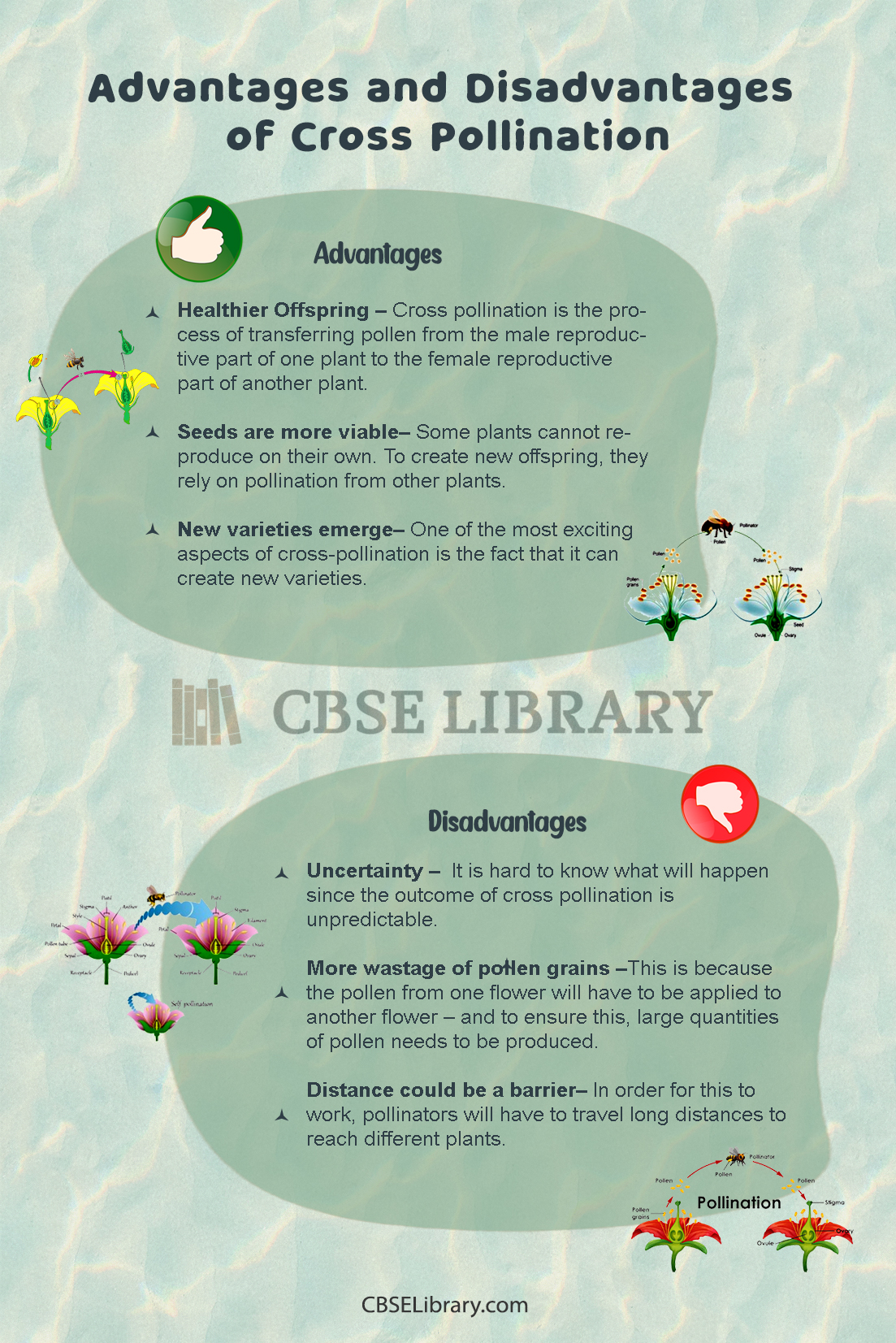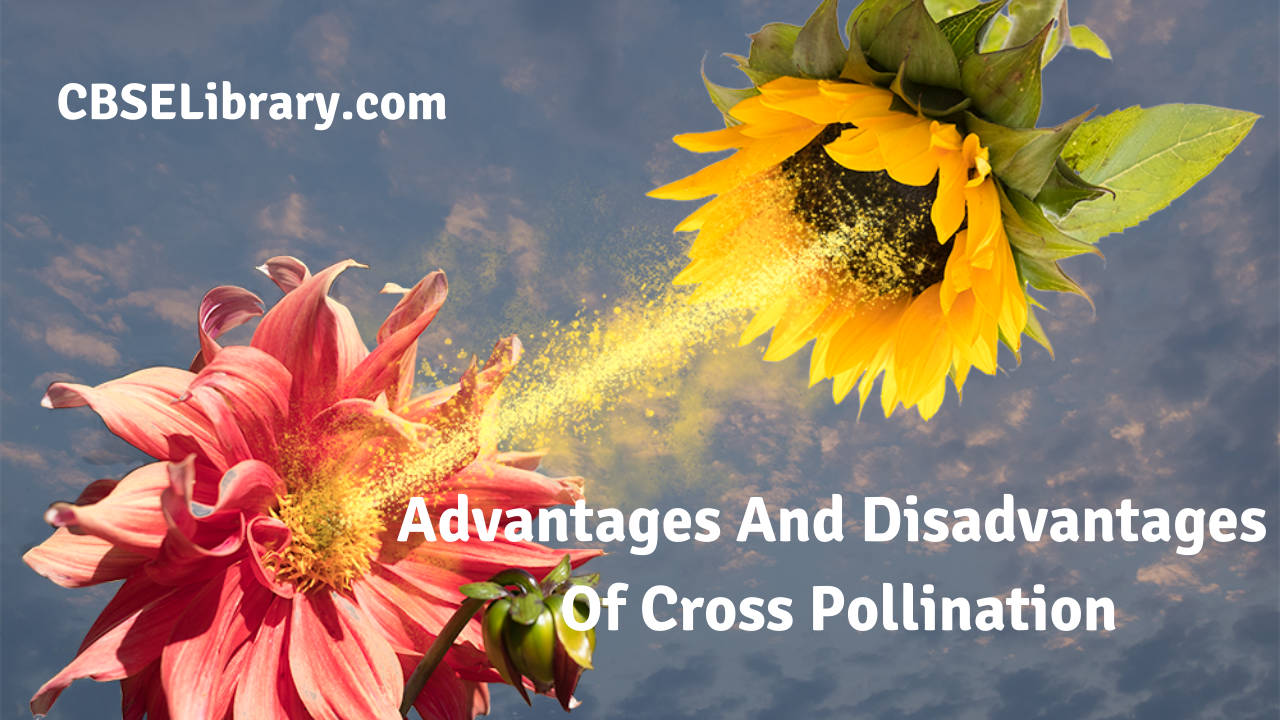Advantages And Disadvantages of Cross Pollination: Cross pollination is the act of exchanging genetic material between organisms of different species. The term is often used in agriculture, and refers to the transfer of pollen from one plant to another plant of a different variety or species. In horticultural terms, cross-pollination is the transfer of pollen from the male part of a flower to a female part of another flower. Pollen is extremely light and can travel on the wind, so it’s very common for different plants to cross pollinate.
Students can also find more Advantages and Disadvantages articles on events, persons, sports, technology, and many more.
Cross pollination helps create new varieties of plants that are more resistant to different types of disease, drought, or cold weather. One way we can promote cross pollination is by planting different types of flowers in close proximity. Bees are very important pollinators because they can fly from flower to flower. Choose flowers that have different blooming periods so that the bees will have continuous access to a varied supply of nectar and pollen.
- Advantages of Cross Pollination
- Disadvantages of Cross Pollination
- Comparison Table for Advantages and Disadvantages of Cross Pollination
- Conclusion on Cross Pollination – Advantages And Disadvantages
- FAQs on Advantages And Disadvantages of Cross Pollination
Advantages of Cross Pollination
Cross pollination is important because it helps to keep the genetic diversity of our food crops. Other advantages of cross pollination are as follows:
- Healthier Offspring – Cross pollination is the process of transferring pollen from the male reproductive part of one plant to the female reproductive part of another plant. This typically happens when bees, wind, or water carry pollen from one plant to another. Cross-pollinating plants can also happen with humans using a hand-held pronged device. The offspring are healthier because they receive more genetic diversity.
- Seeds are more viable – Some plants cannot reproduce on their own. To create new offspring, they rely on pollination from other plants. Cross-pollinating different plants creates plants that are genetically viable and more resistant to disease.
- New varieties emerge – One of the most exciting aspects of cross-pollination is the fact that it can create new varieties. The seeds that are created have genetic material from both parents and often have different traits than either parent plant. Plants can also be made more resistant to diseases by crossing them with other varieties and selecting for those that are more hardy.
Disadvantages of Cross Pollination
Though it seems like cross pollination has many advantages, it also has some apparent disadvantages:
- Uncertainty – Uncertainty is a big disadvantage of cross pollination. It is hard to know what will happen since the outcome of cross pollination is unpredictable. Cross pollination can lead to decreased resistance to diseases, which would be bad for farmers and the environment. The risk outweighs the rewards in this situation.
- More wastage of pollen grains – Cross pollination will lead to wastage of pollen grains. This is because the pollen from one flower will have to be applied to another flower – and to ensure this, large quantities of pollen needs to be produced. In nature, this is not so practical and the plant has to spend considerable energy and resources to produce large quantities of pollen. Hence, cross pollination wastes pollen even though it gets transported by wind, water or animals to other plants.
- Distance could be a barrier – The distance between cross pollinators could be a problem. In order for this to work, pollinators will have to travel long distances to reach different plants. Factors like fatigue, distance and other problems can affect the overall pollination process.

Comparison Table for Advantages and Disadvantages of Cross Pollination
Following are the advantages and disadvantages of Cross Pollination:
| Advantages | Disadvantages |
| Healthier Offspring | Uncertainty |
| Seeds are more viable | More wastage of pollen grains |
| New varieties emerge | Distance could be a barrier |
Conclusion on Cross Pollination – Advantages And Disadvantages
Cross Pollination is the process of transferring pollen from one plant to another plant of the same species. Cross-pollinating can result in more viable and healthier plants because it combines two diverse gene pools. Cross pollination is important because by doing this, it ensures that there will be a variety of different crops for us to use and eat!

FAQs on Advantages And Disadvantages of Cross Pollination
Question 1.
What is Cross Pollination?
Answer:
Cross pollination is the process of transferring pollen from the male part of one flower to the female part of another.
Question 2.
What are the advantages and disadvantages of Cross Pollination?
Answer:
Cross pollination can be a very useful technique as it can result in the breeding of new beneficial and disease-resistant varieties that may not usually occur in the offspring. However, some disadvantages include plants losing their pollen, self-fertilisation and cross-pollination with undesired gene traits.
Question 3.
Why is Cross Pollination important?
Answer:
Cross pollination is the process of transferring pollen from the male reproductive organs (stamen) to the female reproductive organs (carpels). It ensures that plants are able to reproduce. Plants must pollinate because they can’t survive if they don’t reproduce.
